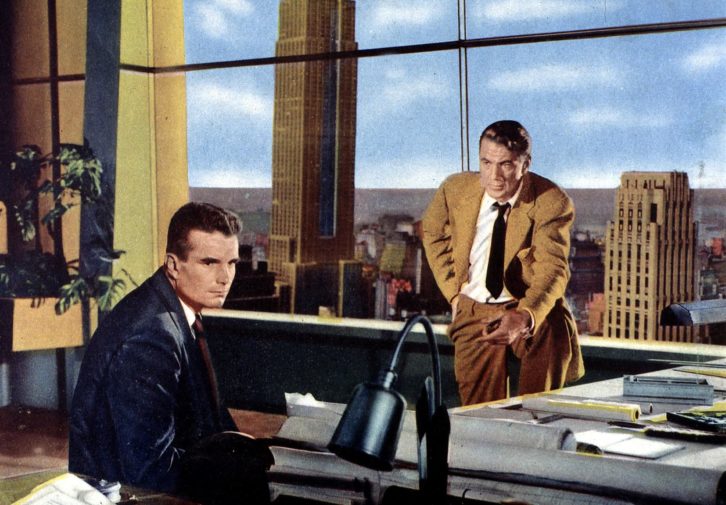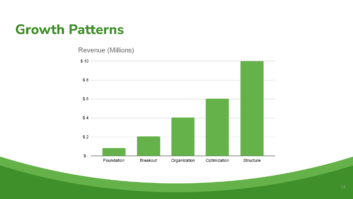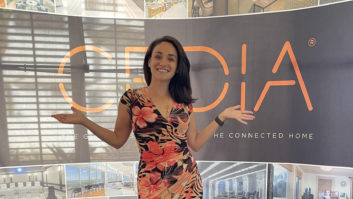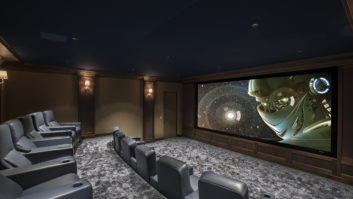
When I started my custom installation business, we’d do pretty much anything for money. Run network cabling? Sure! Troubleshoot your computer? No problem. Hang pictures and curtains for $150 an hour (true story)? All day long. As demand grew, I had more work than we knew what to do with and had to reckon with the question: “Who are we?” If I couldn’t define that for myself, what were our customers thinking? The last thing I wanted was to be perceived as a jack of all trades, master of none.
Ayn Rand writes about two extremes in her book The Fountainhead. At one end we find Howard Roark, a principled architect who won’t do any work that isn’t perfect. At the other end we get to know Peter Keating, a promising young architect who will take on any work that comes along. Both are unhappy for different reasons, but the book does an amazing job of helping inform one’s own perspective. You can’t help but look in the mirror and ask yourself: “Am I a Roark or a Keating?”
In our early years, I was an unintentional Keating, fearing if I didn’t take everything that came along, I’d starve and wouldn’t get any more work. It was only after a few years that we built up enough critical mass to become more Roark-like. Anyone can be a Roark during boom times. There’s so much work that it forces us to choose only what’s most profitable and enjoyable. What about the lean times? That’s where having a well-thought-out mission, vision, and set of company values comes in handy. If you’re making a Keating decision in a Roark company, at least you have a true north to look at and force yourself to acknowledge a deviation from your values (hopefully for a good reason).
Roark’s commitment to perfection was underpinned by a certainty that his type of client would seek him out vs. resorting to marketing and advertising. His prophecy came true, but at great cost to himself and those around him. In our CI businesses, we’ve all done jobs for “perfect” customers and wished that every day could be filled with more projects just like them. Often it can feel frustrating when we try to recreate these opportunities when so often they’re based on fickle referrals and chance personality fits.
During these boom times, why not try to be more purposeful about who you are and who you aren’t in an effort to attract your ideal customer and place yourself along the Roark/Keating continuum?
Also by Henry Clifford: Are You Scaring Off Potential Customers?
Defining Ideal Customer Personas
Have you thought about your ideal customer? What’s his/her name? How old are they? What kind of car do they drive?
We worked with a marketing agency to develop ideal customer personas and ended up with a prototypical husband and wife we call “Gene & Jeannie.” Gene is a C-level executive in his 50s with a ton of disposable income, an affinity for luxury goods, and values his time above all else. Jeannie hates technology and doesn’t want any wires cluttering up the house. If she had it her way, there wouldn’t be any visible TVs or sound in the house at all.
We didn’t just make up Gene & Jeannie. We interviewed 10 of our favorite clients and asked them a bunch of questions. One finding that really sunk in was how much of a premium they put on trust.
Ever since we started intentionally marketing to Gene & Jeannie, we’ve been getting more referrals and leads from people just like them. It also became patently obvious when we weren’t talking to them. We slowly started to trust that there were enough Gene & Jeannies out there and it became easier to politely encourage price-focused prospects to look elsewhere. Do you understand your customer’s big value drivers around their buying decisions?
Picking Products and Services
Once we knew who our customers were and why they worked with us, picking out products and services that appealed to them became much more clear. If it was simple and saved them time, it stayed. If it didn’t, we cut it. This meant we moved away from complex control systems and started emphasizing best-in-class subsystems that could be tied together with a control system if our client wanted it later (they seldom did).
Saying “Yes, and…”
One of our larger challenges has always been giving the client what they want, even if what they’re asking for is completely wrong. We try to head off requests and demands early on to avoid big issues down the road. New options like smart TVs, voice remotes, and IoT devices are wreaking havoc on our quest for simplicity, and we often go into a home technology project having to tell a client that the new network extender they just bought is no good, or could we please not use the smart deadbolt they just purchased? Gene & Jeannie don’t like hearing the word “no.” Instead, we try and say “yes, and…” to make sure they feel in charge and we can deliver a bulletproof solution at the end of the project.
Also by Henry Clifford: 10 Ways to Revitalize Your Business
Fighting the Battle of the Home Page
As with most things, the road to hell is always paved with good intentions. We’re often approached by vendors or field suggestions internally about new products. We always try to keep Google in mind when we do. There was a time when there were dozens of search engines. Why did Google attract visitors? They had a simple user experience when compared to their top rival at the time (Yahoo! — a Keating style “everything-to-everyone” portal) and delivered meaningful results. Even today, when you go to google.com, you’re still presented with the Google logo, a search box, and two buttons. With all that Google does, how on earth have they kept their home page so clean for 20+ years? They do it by constantly battling their employees, board members, and customers with “could you just add a weather ticker?” requests on a daily basis.
At the end of the day, Google defined that they wanted a clean, simple home page and stuck with that maxim. Our businesses are no different. The road to complexity and bad system design is paved one compromise or poorly researched decision at a time. What are you doing to fight “The Battle of the Home Page” inside your business?
Once we studied our favorite customers and named their personas, becoming more Roark-like became a lot easier and less fear-inducing. We’ve felt more in control of our own identity and destiny with a solid mission, vision, and values statement for us to align around. If we’re screwing up, we know it quickly — chances are it’s because we’re not living our values.
Are you a Roark or a Keating?







